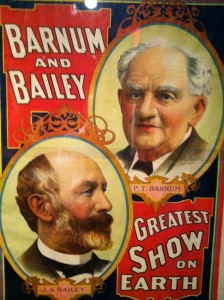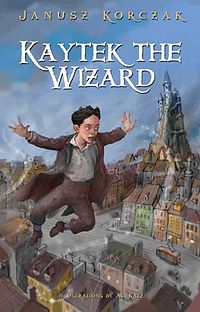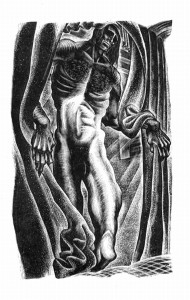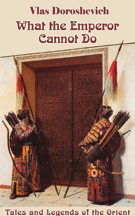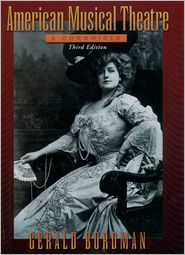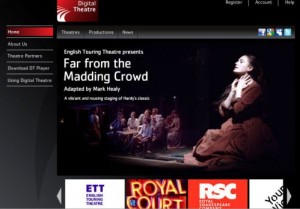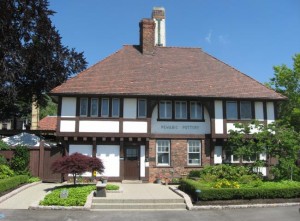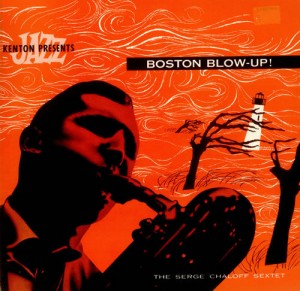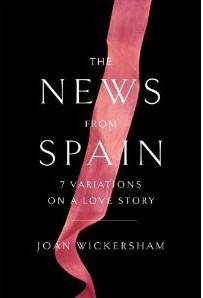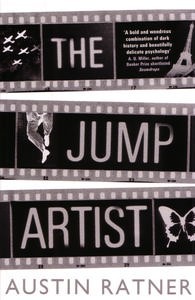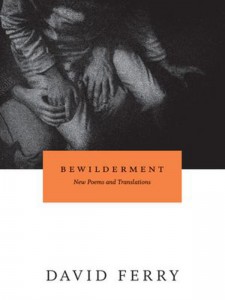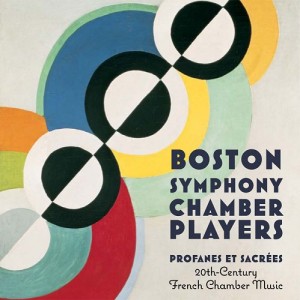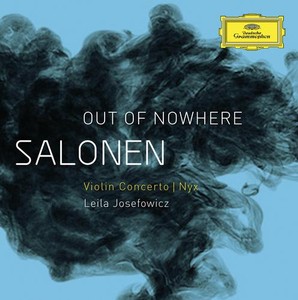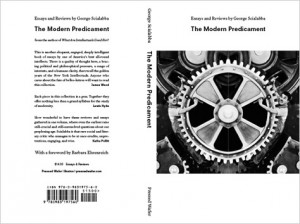The Annual Arts Fuse Holiday Gift Roundup — Tips From the Experts
Wondering about what to give the arts and culture lover on your gift list? No problem—the sage writers for The Arts Fuse (with an assist from our readers) come to the rescue with thoughtful suggestions.
With gift season comes the existential quandary: What to give the culture lovers on your list? This season the writers for The Arts Fuse help fend off the crisis by recommending items that will delight the heart and stimulate the mind. Please feel free to add your own suggestions in the comments section.
Please keep in mind that if you order any of the following tips from this Amazon link, The Arts Fuse receives a small percentage of the sale.
This page will be updated as more selections come in . . . .
Happy Holidays,
Bill Marx
Editor, The Arts Fuse
I have always loved circuses, and The American Circus, a richly illustrated tome from Yale University Press and the Bard Graduate Center ($65, 472 pages), contains enough arcane lore, grimy history, and gob-smacking pictures to satisfy my big top addiction, particularly via chapters such as “Horses and Cat Acts in the Early American Circus” and “Circus Music in America.” Sometimes the tone of the essays is overly academic, the emphasis on the mechanics of transplanting European traditions into American circuses frustratingly narrow, and there are a few suprising omissions (far too little on the impact of the circus on popular theater and film, though there is a chapter on “The Circus in Nineteenth-Century American Children’s Literature”). The Bard Graduate Center in New York is currently presenting an exhibition on the history of the circus in New York—the show runs through February 3, 2013.
For those who, albeit dangerously late, are looking for a tough-minded rejoinder to the Harry Potter cult, the first English translation has arrived of Kaytek the Wizard (Penlight Publications, 272 pages, $17.95), a marvelous fable by Janusz Korczak (1879–1942), the Polish pediatrician and child psychologist whose dedication to educational innovation was parlayed through essays, plays, and a number of volumes for children, including Matt the King. He also ran an internationally admired orphanage in Warsaw. This year marks the 70th anniversary of this death (in the Treblinka concentration camp, heroically accompanying the children in his orphanage) and the 100th anniversary of the founding of his orphanage on Krochmalna Street in Warsaw.
According to translator Antonia Lloyd-Jones, Kaytek the Wizard is “the answer to every child’s dream of freeing him or herself from the endless control of adults and then shaping the world to his or her own designs.” For Korczak, children and adults must learn to take moral responsibility for their fantasies.
For those fascinated by all things Frankenstein (1818 edition as text), The Annotated Frankenstein from Harvard University Press ($29.95, 400 pages) makes a terrific gift, the notes and introduction by Susan J. Wolfson and Ronald Levao agile enough to satisfy scholarly appetites as well as those who are interested in the gloriously crass afterlife of Mary Shelley’s creature in popular culture. [“Laudanum (Latin: Praiseworthy] is opium dissolved in alcohol, a widely used pain-reliever, sedative, and psychedelic agent, first concocted by Paracelsus, one of Victor’s boyhood heroes.”) The 98 color illustrations are also a plus.
At the risk of moving into the competitive turf of The Fuse’s jazz critics, I would recommend for the holiday stocking of any music lover the hauntingly beautiful (and brave) album Aurora (Clean Feed), which features pianist Ran Blake and vocalist Sara Serpa. The pair’s second recording together is philosophical in temper—meditative, playful, sad, emotionally complex. The overall tone is of a kind of multi-layered melancholy that’s interrupted by unpredictable spurts of delight (check out the mischevous “Moonride”). Throughout the album, Serpa’s tone swings, on a psychological dime, from bright innocence to dark despair. The tunes are an eclectic gathering, including Blake compositions “Mahler Noir” and “Dr. Mabuse,” “The Band Played On,” and “Strange Fruit,” which Serpa takes on unaccompanied.
For me, the most moving performance on the album is “Last Night When We Were Young,” a rendition of the Arlen/Harburg tune that dives through facile nostalgia into frightening realms of regret. Needless to say, Blake’s performance combines enormous lyricism and intelligence.
Serpa will be performing in concert with Ran Blake and others as part of Brando Noir at New England Conservatory in Boston on January 29th.
Give the gift of literate magic this season via three outstanding anthologies of short tales that partake of the uncanny.
Russian Magic Tales from Pushkin to Platonov (Penguin Classics, 440 pages, $18), translated and edited by Robert Chandler, collects two centuries of folk yarns, including a generous selection of narratives by Andrey Platonov, “the greatest Russian prose-writer of the last century.” I agree and hope that these powerful pieces will inspire readers to seek out his other work, which have been published in new translations via the New York Review of Books Press.
Tales of the German Imagination: From the Brothers Grimm to Ingeborg Bachmann (Penguin Classics, $18, 362 pages), selected and translated by Peter Wortsman, proffers some of the “most chilling, fantastical, and enthralling stories from over 200 years of German literature.” Nice to see, among the usual suspects, stories by Robert Walser, Paul Celan, and Robert Musil.
What the Emperor Cannot Do: Tales and Legends of the Orient (GLAS Publishers, $15, 174 pages) is the first appearance in English of the anti-authoritarian fables of the Russian writer Vlas Doroshevich (1864–1922), a friend of Chekhov’s who was an enormously popular journalist of his era (he even dabbled in theater criticism). These satiric fairy tales (anti-goverment parables in disguise) were censored under the Czar and despised by the Bolsheviks. Not sure why Chandler didn’t include any of these in his Penguin anthology.
Finally, why just see the film Lincoln to mark the 150th anniversary of the Emancipation Proclamation? The Library of America has published a rich anthology of American Antislavery Writings, with a short but effective introduction by editor James G. Basker. The crusade against slavery took a variety of forms in print: autobiography, fiction, children’s literature, letters, speeches, poetry, and song. Here is a stanza from The Anti-Slavery Alphabet for beginning readers: “W is the Whipping post,/ To which the slave is bound,/ While on his naked back, the lash/ Makes many a bleeding wound.”
The writers taking up the cause are a wide-ranging bunch: Thomas Paine, Benjamin Franklin, George Washington, John Brown, Ralph Waldo Emerson, Emily Dickinson, Walt Whitman, and Harriet Tubman. If nothing else, the volume is a primer in the rhetorical power, argumentative strategies, and moral passion of nineteenth- and eighteenth-century American prose.
The set-up has been far too neat: William Shakespeare is the man of mystery, while the hard-drinking, ornery satirist/classicist Ben Jonson, the second banana of Elizabethan theatrical genius, is conveniently easy to peg. The Bard contains multitudes; Jonson must be a one-trick wonder. The see-saw scenario has guaranteed one-dimensional evaluations of the latter’s plays and poetry. In his magisterial new biography, Ben Jonson: A Life (Oxford University Press, 512 pages, $39.95), Ian Donaldson successfully argues that Jonson was a far more enigmatic, more protean personality than has been previously thought –- and that understanding the multiplicity of the conflicting roles that Jonson played sheds light on his neglected brilliance as a dramatist. Move over Shakespeare, Jonson is a fascinating cipher as well.
I interviewed Donaldson about Jonson, and how his study deepens our understanding of the unruly writer’s personality and creative vision. As a Jonson admirer, I had been waiting for this splendidly multi-dimentional portrait of Ben for years.
— Bill Marx
Merch, smerch. How many tee-shirts with the name of your favorite dance company do you really wear, especially this time of year?
You don’t get better than Astaire. Pair a DVD of the exquisite Top Hat (Ginger Rogers! Irving Berlin!) with either a costume lid or the real thing for that debonair devil or steampunk gal of yours.
The fun design minds at Zazzle have dance-themed cases and skins for your mobile phone browsable here, but a few personal favorites hit on tap, ballet, hip hop, and all-purpose encouragement available in numerous colorways.
Personally, I’m a fool for the artisans at Etsy, and this retro Arthur Murray pillow is yet another reason why, but you can get into the holiday spirit and craft your own. Just go to Etsy and search on digital downloads and type in the keyword dance—or music, or circus, or alphabet, or any other theme that delights your imagination. Then free your inner artist, creating a tee-shirt, tote, pillow, or holiday card that counts.
— Debra Cash
For those of us still buying books, one of the best reference volumes on American musical theater has just been updated and re-published by Oxford University press. Running over 1,000 pages in hard-cover, American Musical Theatre: A Chronicle, by Gerald Boardman and Richard Norton, is now on sale for $56 (runs around $65 with shipping and tax). I find the one-volume format to offer a treasure trove of information that meets the requirements for research as well as causal questions on the history of our musical theater, from the eighteenth century to now.
–Iris Fanger
My gift suggestion is for fans of British theater (and just good theater in general). It’s a gift card to Digital Theatre, which films full productions of top British shows and then offers them for online rental ($4.99) or download purchase in SD ($12.99) or HD ($17.99). Their theater partners range from The Royal Shakespeare Company and Shakespeare’s Globe to Regent’s Park Open Air Theatre and Young Vic.
From what I’ve seen so far, the HD downloads are easy to use and of excellent video quality, the offerings are interesting and feature many highly reviewed productions, and the filming style lets the productions speak for themselves, providing great angles to see everything the way the shows’ directors and designers intended while avoiding the common tendencies of filmed theater productions to impose a ton of quick cuts, weird angles, and extreme close-ups to make things more film-like. Gift cards can be bought here.
Not a gift suggestion, but I would also strongly recommend everyone check out the free journal section “The Journal” while they are on the website. It is a curated source of high quality performing arts video, everything from animation and short films to dance, theater, and music pieces, from sources around the world. It’s like an edited YouTube of fascinating, diverse, artsy videos with a new, free one selected daily.
— Alyssa Hall
This year I am giving the gift of Neil Young. His new memoir Waging Heavy Peace (Blue Rider Press, 512 pages, $30) includes stories about music, his personal battles with illness, and his love of toy trains. I have already purchased this book twice to give and am hoping that someone will pick it up for me this holiday season. (Hint, hint.)
— Kathleen Burke
!) Back scratchers: Max Force Metal Back Scratcher with Black Grip by Max Force. Excellent for getting to the places that are hard to reach, those places where itches break out. These scratchers are fairly durable, though best not to sleep on them too often.
2) Pocket, magnetic, Chinese chess (Xiangqi) sets. If you play “regular” chess you may as well learn its intriguingly different Chinese/Asian cousin. (Both forms of chess derive from proto-chess in India, circa 600 AD.) These sets are inexpensive, useful ways to think about the game and/or take it with you when you go.
— Harvey Blume
Founded in 1903, Detroit’s Pewabic Pottery was part of the early 20th-century American Arts and Crafts Movement that also produced Rookwood, Rosewood, Marblehead, and a host of other fine art potteries. Pewabic is one of only a handful still operating in something like its original form, out of its purpose-built, 1907 Tudor Revival National Historic Landmark building. The MFA’s Museum Shop (at the Huntington Avenue Entrance) carries a small collection of Pewabic pieces in classic green glazes and very reasonable prices. Hurry on down, though. They seem to be disappearing fast.
— Peter Walsh
For jazz fans with a serious interest in Boston’s musical history, this year there’s an ideal gift: Richard Vacca’s The Boston Jazz Chronicles: Faces, Places, and Nightlife 1937-1962 (Boston: Troy Street Publishing, 2012). (For more detail, see our extensive review.)
Was there a “Boston sound”? Well, to go along with the book (or as gifts for someone who already has the book), pick up some of these outstanding reissues of some of the best Boston jazz from the 1940s and 1950s, and let your recipient decide for him- or herself:
Sabby Lewis Orchestra and Sextet – Boston Bounce (78s from 1944-1949 – reissued in 1975 on LP by Phoenix Jazz – reissued in 2010 by Hallmark as MP3s). The Sabby Lewis Orchestra was Boston’s top big band in the 1940s—even Count Basie was impressed by them. The reissued sextet tracks include performances by another important Boston bandleader, violinist Ray Perry, and the orchestra recordings are highlighted by a Tadd Dameron arrangement of “Embraceable You”, featuring vocalist Evelyn White.
Charlie Mariano Quintet – Boston Days (1953 – LP reissued on CD by Fresh Sounds). Alto saxophonist Charlie Mariano was a key figure in Boston’s transition from swing to bebop (and went on to have a significant career with Charles Mingus, among others, and later in Europe). Boston Days boasts what are probably the first recordings by the already formidable pianist Jaki Byard, part of a quintet that also included trumpeter Herb Pomeroy, bassist Jack Carter, and drummer Peter Litman.
Serge Chaloff – Serge and Boots / Fable of Mabel (1954 – 2 LPs reissued on CD by 1201 Music). Baritone saxophonist Serge Chaloff won early fame in the late 1940s as one of Woody Herman’s “Four Brothers”. Back in Boston, Chaloff was plagued by substance abuse, which he eventually beat, only to be felled by a spinal paralysis that ultimately took his life in 1957. Despite all this, Chaloff left behind several of the outstanding recordings of the period, two of which are collected on this reissue; the first pairs him with alto saxophonist and composer/arranger Boots Mussulli and the rhythm section of pianist Russ Freeman, bassist Jimmy Woode, and drummer Buzzy Drootin, while the second finds him leading an exceptional nonet composed of trumpeters Herb Pomeroy and Nick Capezuto, trombonist Gene DiStasio, alto saxophonist Charlie Mariano, tenor saxophonist Varty Haroutunian, pianist Dick Twardzik, bassist Ray Oliveri, and drummer Jimmy Zitano.
Serge Chaloff – Boston Blow-Up / Blue Serge (1955-1956 – 2 LPs reissued on CD by Fresh Sounds). The first session teams Chaloff once again with trumpeter Herb Pomeroy, alto saxophonist Boots Mussulli (who contributed the majority of the compositions), and drummer Jimmy Zitano, along with pianist Ray Santisi and bassist Everett Evans. The second date doesn’t feature Bostonians, but is nonetheless an outstanding set of recordings; Chaloff is joined here by pianist Sonny Clark, bassist Leroy Vinnegar, and drummer Philly Joe Jones.
Herb Pomeroy and his Orchestra – Life Is a Many-Splendored Gig / Band in Boston (1957-1958 – 2 LPs reissued on CD by Fresh Sounds). The Pomeroy band may well represent the pinnacle of Boston jazz in the 1950s, featuring terrific compositions and arrangements by—among others—Jaki Byard, Bob Freedman, Boots Mussulli, Everett Longstreth, and a young Arif Mardin, as well as Pomeroy himself. The exceptional soloists include trumpeters Joe Gordon, Lennie Johnson, and Bill Berry; trombonist Gene DiStasio; alto saxophonists Charlie Mariano and Boots Mussulli; tenor saxophonists Varty Haroutunian and (on five tracks) Zoot Sims; baritone saxophonist Jimmy Mosher; pianist Ray Santisi; and bassist John Neves.
— J.R. Carroll
THE BOOK OF MISCHIEF, NEW AND SELECTED STORIES. Steve Stern, Graywolf. A wonderful book of tales that combine myth, magical realism, and beautifully observed details about life among Jewish immigrants in the 20th century. The stories should be read one at a time, preferably aloud, then savored by anyone interested in Jewish literature, and then, until the next reading, left to reside on the shelf next to Isaac Babel and I.B. Singer. (Arts Fuse review)
THE LION SLEEPS TONIGHT AND OTHER STORIES OF AFRICA. Rian Malan, Grove Press. A must for anyone interested in Africa, essays by Milan have appeared in magazines like Rolling Stone and are incisive and thought-provoking. My favorite was was “In The Jungle” about Solomon Linda, the Zulu man who composed the melody that eventually became “Wimowe.”
THE NEWS FROM SPAIN, Seven Variations on a Love Story. Joan Wickersham, Knopf. A beautiful collection of stories that deals with love in its many forms, some requited, some not. What makes this books so interesting is the way Wickersham quietly but persuasively expands the notion of what a short story can be. And in gorgeous and beguiling prose.
HOUSE OF STONE. Anthony Shadid, Houghton Mifflin Harcourt. An exploration of the meaning of home and our relationship to it by the distinguished news correspondent who died tragically of an asthma attack in Libya just before this book was published.
HOLOGRAM FOR THE KING. Dave Eggers, McSweeney’s. In this amazingly imaginative novel Eggers creates a metaphor for the world we are living in, especially in the Middle East. The claustrophobic aura of the book resembles Kafka as it portrays a relentlessly futile and unforgiving setting through which his protagonist must maneuver. Very different from the flamboyant earlier books, but equally moving.
THE PASSAGE OF POWER: THE YEARS OF LYNDON JOHNSON. Robert Caro, Knopf. Although there has been sniping about details in this book by critics in Slate and Salon, I found this volume which covers the years just before JFK was assassinated and the crucial weeks that followed amazing in their clarity and precision of detail. A real page-turner about events you thought you knew but didn’t, not really.
WHY BE HAPPY WHEN YOU CAN BE NORMAL? Jeanette Winterson. Grove. In this memoir Winterson finally sorts out some of the issues she has been struggling with in her fiction — the sense of isolation she has felt all her life, first as a Lesbian and later as a successful author seduced by new temptations she had not dreamed of when young. Very moving in its honesty.
SECOND PERSON SINGULAR. Sayed Kashua. Grove. Not many novels can be described as lovable, but this inventive work by a Palestinian writing in Hebrew who is also the creator of an Israeli sitcom, Arab Labor, is funny, gripping, and in the end has the intimacy and mystery that all really wonderful novels have. What is striking is that until now I never imagined what it would be like to be an Arab living in Jerusalem and in intersecting stories about two young Arab men, Kashua has written a book surely to change your angle of vision forever.
Not all my recommendations are from this year. Here are three more older books:
THE JUMP ARTIST. Austin Ratner. Bellevue Literary Press. Winner of the prestigious Sami Rohr Prize, this novel, based loosely on the life of the great photographer, Philippe Halsman, is a revealing look at the Austria of the late 1920s and early 1930s where Halsmann’s father died while hiking in the Austrian Alps and set off a tumult that was known as a latter-day Dreyfus Affair. Ratner’s unusual way of telling the story, which is a metaphor for Halsmann’s later work (he loved to photograph people while they were jumping) is a sly hint as to the riches contained here.
MARY. Janis Cooke Newman. Harvest. With the new movie, “Lincoln,” and renewed interest in the Lincoln family, this fictionalized life of Mary Lincoln can provide an interesting addition to the Lincoln bibliography. It is a touching look at their unusual marriage and the slow erosion of their love as personal tragedies became almost as terrible as the tragedy that was the Civil War.
PORTRAIT OF A LADY. Henry James. Inspired by a wonderful essay by Anthony Lane in the September 3rd, 2012 New Yorker, I went back to this, one of my favorite books, and found James’s acute knowledge of the interior life of Isabel Archer more remarkable than I remembered. This and Tolstoy’s Anna Karenina (the marvelous new movie will certainly send lots of readers back to that equally marvelous novel) are brilliant books about two surprisingly modern women and could give enormous pleasure to readers who really want to “dig in” this winter.
— Roberta Silman
David Ferry’s Bewilderment: awarded the National Book Award in November; yet another impeccable volume of poems and translations from this sober, impeccable writer
George Kalogeris Dialogos: a master poet inhabits serious and humane poems from centuries of European literature
Alice Oswald’s Memorial: the core of the Iliad — the naming of the fallen — sung in perfect pitch.
The Word Exchange: Anglo-Saxon Poems in Translation, edited by Greg Delanty and Michael Matto: now in paperback, contemporary translations of the great A-S treasury of riddles, charms, tales, and scripture. Translators include David Ferry and ArtsFuse senior contributor, Marcia Karp.
— Marcia Karp
Here are some suggestions for the cinephile in your life.
Do the Movies Have a Future? by David Denby. (Simon and Schuster, 368 pages, $27)
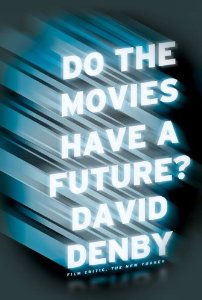
New Yorker critic David Denby examines contemporary film starting with an essay on “corporate aesthetics.” He presents a solid argument in defense of cinema that enlightens through an independent and creative vision. The powers posed against the imagination are formidable: spectacle and irrelevance overwhelming popular taste, smaller and smaller screens competing with the silver screen, film criticism becoming dumbed down via thousands of blogs. He calls for a new appreciation of the role of a critic, seeing how the act of judgment supports the existence of provocative and evocative cinema. Denby writes colorfully and passionately about movies, stars, directors, and the future of film going.
Night of the Hunter (1955) directed by Charles Laughton.
Charles Laughton’s only directorial effort is one of the greatest treasures in American film. This distinctive film, a combination of dark impressionistic noir and childlike naïveté, was too strange for the public, failing at the box office when it was first released. The Blue-ray version of the film has extras that fans will treasure. Among them you will find a wonderful interview with Laughton, a deleted scene performed on The Ed Sullivan Show – and best of all – a restored version of Laughton directing the film from off camera. You can hear how he coaxed a performance out the very strange little girl in the film. It also has her singing “Pretty Fly” in her own voice, before it was dubbed by another singer.
Rin Tin Tin by Susan Orlean. (Simon and Schuster, 352 pages, $16)
This book came out in 2011, but would make a nice gift. Orlean explores the history of Rin Tin Tin across the decades, from his humble roots on the battlefields of World War I, time with the obsessive trainer Lee Duncan, and his years as the first major canine star in the silent film era. Orlean goes into the dog’s various progeny and writes about the popular TV show. It’s a lively read filled with facts for dog lovers, movie fans, and the pop culture curious.
The Storytelling Animal: How Stories Make Us Human by Jonathan Gottschall. (Houghton Mifflin Harcourt, 248 pages, $24.)
This pleasant pop science read pays homage to the power of narrative by attempting to create a “unified theory of storytelling” based on research in neuroscience, psychology, and evolutionary biology. (Arts Fuse review)
— Tim Jackson
Profanes et Sacrèes: 20th-Century French Chamber Music (BSO Classics). No American orchestra owns French repertoire as thoroughly as does the Boston Symphony, and this substantial, Grammy-nominated album demonstrates this fact well. The recording features the BSO Chamber Players performing music by Ravel, Debussy, Henri Dutilleux, Henri Tomasi, and Jean Françaix, and is available from the BSO website.
John Adams, Harmonielehre and Short Ride in a Fast Machine (SFS Media). Two of the freshest, most bracing pieces by an American composer are the focus of the San Francisco Symphony’s first release of 2012. There are a couple of better recordings out there of Short Ride, but that’s not the focus of this album anyway: Harmonielehre, arguably Adams’s symphonic masterpiece, gets the full treatment from an invigorated SFS and Michael Tilson Thomas.
American Mavericks, San Francisco Symphony/Michael Tilson Thomas (SFS Media). It would be nice if major orchestras on the East coast would focus on American music as diligently as the two big bands (San Francisco and LA) on the West coast, but at least the former regularly releases recordings of its undertakings to let the rest of us know what we’re missing. This album features music by the great American mavericks Henry Cowell, Edgard Varèse, and Lou Harrison played by the SFS and two of the most exciting keyboardists out there: Paul Jacobs (organ) and Jeremy Denk (piano – and see the next item on the list).
Jeremy Denk, Ligeti/Beethoven (Nonesuch). In my review of this album in May, I called it “perhaps the most important classical recording yet of 2012.” Now that we’re nearing the end of December, I can safely argue that this was the most important release of the year: a fascinatingly planned and powerfully executed survey of some of the 19th and 20th century’s most radical music, played to the hilt with energy, insight, and not a little love.
Bruckner, Complete Symphonies with the Gewandhausorchester Leipzig/Herbert Blomstedt (Querstand). Springfield, MA-native Herbert Blomstedt’s first Bruckner cycle – released to commemorate his 85th birthday in July – is epic in every way: each performance (all taped during live concerts) comes across as an event, with a clearly inspired Gewandhausorchester alternately glowing with warmth, shaking the earth in terror, pealing forth in triumph, and staring out in childlike wonder. It’s an incredible journey and one well worth the wait.
Esa-Pekka Salonen, Out of Nowhere (Deutsche Grammophon). Salonen’s Grawemeyer Award-winning Violin Concerto and his tone poem-in-all-but-name, Nyx, make their recorded debuts here. Soloist Leila Josefowicz inhabits the Concerto like no one else could and the Finnish Radio Symphony Orchestra shines (and glowers, among other things) in Nyx. There’s something remarkably fresh about Salonen’s writing in both these pieces (even if Nyx lasts a little longer than it should): it’s new music that draws you in and keeps your attention throughout its duration.
Tanglewood 75th Anniversary Celebration (Boston Symphony Orchestra). The Boston Symphony pulled out all the stops this summer for Tanglewood’s 75th anniversary season, but if you didn’t make it to Lenox in person in July or August (or miss the warm summer nights as we approach the Winter Solstice) you can still partake in the celebration, after a fashion. As part of the festivities, the BSO released a trove of seventy-five archival recordings that are available for purchase and download on their website. The performances (most of which were drawn from radio broadcasts) feature conductors from Koussevitzky to Levine leading plenty of familiar music and a good helping of unfamiliar, and are available in either compressed (MP3) or uncompressed (FLAC) formats.
— Jonathan Blumhofer
Of course, Arts Fuse writers have produced plenty of worthy stocking stuffers for discerning sensibilities. Fuse book critic George Scialabba has a new collection of incisive essays on issues cultural and political. Entitled The Modern Predicament, the volume is published by the excellent local press Pressed Wafer.
Fuse arts writer Helen Epstein is one of the honchos behind Plunkett Lake Press: eBooks of Life Writing. The venture specializes in books from and about Central Europe: authors include Stefan Zweig, Karen Horney, Marie Curie, Jan Masaryk, and Eva Hoffman. The volumes are easy to download and come with a $9.99 price tag.
(Helen also suggests that Fuse readers take their sweethearts on a ride West on Route 2 from Boston, then turn South on 202 and drive down to Sunderland. In a reconstructed Town Hall sits Blue Heron, one of the best restaurants in Massachusetts. ENJOY!)
Fuse book critic Jim Kates suggests that readers contribute to nonprofits. Besides supporting The Arts Fuse in its mission to generate independent and professional criticism of the arts in New England (and beyond), readers should consider contributing to Zephyr Press, which Kates helps run. Last year Zephyr Press recently celebrated its 30th anniversary of “publishing outstanding literature from around the world.”

